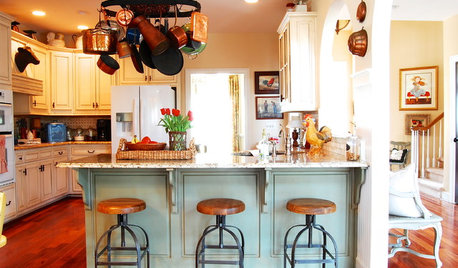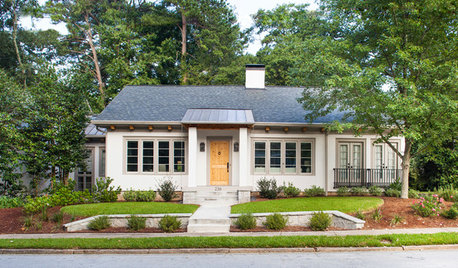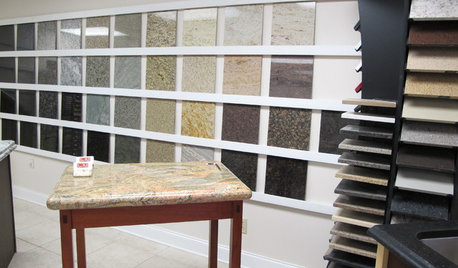Question about installing new sod over old grass in Georgia
gil_happy
11 years ago
Related Stories

LANDSCAPE DESIGNIs It Time to Consider Fake Grass?
With more realistic-looking options than ever, synthetic turf can be a boon. Find the benefits and an installation how-to here
Full Story
REMODELING GUIDESConsidering a Fixer-Upper? 15 Questions to Ask First
Learn about the hidden costs and treasures of older homes to avoid budget surprises and accidentally tossing valuable features
Full Story
FENCES AND GATESHow to Install a Wood Fence
Gain privacy and separate areas with one of the most economical fencing choices: stained, painted or untreated wood
Full Story
GARDENING GUIDES5 Great Grasses for a New Lawn
Learn about maintenance, wear tolerance, ideal climate and more for these top turf choices to pick the right one for you
Full Story
HOUZZ TOURSMy Houzz: French Country Meets Southern Farmhouse Style in Georgia
Industrious DIYers use antique furniture, collections and warm colors to cozy up their traditional home
Full Story
GARDENING GUIDESNew Ways to Think About All That Mulch in the Garden
Before you go making a mountain out of a mulch hill, learn the facts about what your plants and soil really want
Full Story
GREEN BUILDINGWhat's LEED All About, Anyway?
If you're looking for a sustainable, energy-efficient home, look into LEED certification. Learn about the program and its rating system here
Full Story
GARDENING GUIDESHow to Plant a New Lawn From Seed
Choose from more grass varieties and save money over sod by starting your lawn from seed
Full Story
BEFORE AND AFTERSHouzz Tour: A Georgia Foreclosure Gets a Major Overhaul
Gutting and redesigning turn a mishmash 1925 home into a unified haven with better flow
Full Story
KITCHEN COUNTERTOPSWalk Through a Granite Countertop Installation — Showroom to Finish
Learn exactly what to expect during a granite installation and how to maximize your investment
Full StoryMore Discussions








dchall_san_antonio
gil_happyOriginal Author
Related Professionals
70037 Landscape Architects & Landscape Designers · Belmont Landscape Contractors · College Park Landscape Contractors · Columbine Landscape Contractors · Conroe Landscape Contractors · Danvers Landscape Contractors · Desert Hot Springs Landscape Contractors · El Mirage Landscape Contractors · Old Saybrook Landscape Contractors · Pahrump Landscape Contractors · Pine Hills Landscape Contractors · San Rafael Landscape Contractors · St. Louis Landscape Contractors · Wallingford Landscape Contractors · West Hollywood Swimming Pool Buildersgil_happyOriginal Author
dchall_san_antonio
gil_happyOriginal Author
gil_happyOriginal Author
dchall_san_antonio
gil_happyOriginal Author
gil_happyOriginal Author
dchall_san_antonio
Serenity Lawn Service
rager_w